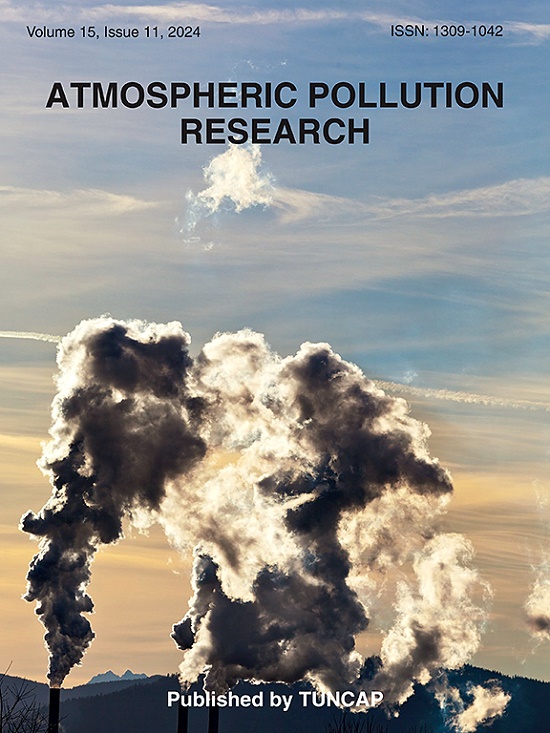凉爽屋顶对孟加拉国达卡城市热岛和空气质量的影响:热浪期间的案例模型研究
IF 3.5
3区 环境科学与生态学
Q2 ENVIRONMENTAL SCIENCES
引用次数: 0
摘要
本研究探讨了在 2021 年 4 月发生极端热浪期间,凉爽屋顶对孟加拉国达卡城市热岛(UHI)和空气质量的影响。使用气象研究与预测模型(WRF)对反照率为 0.2 的传统屋顶和反照率为 0.8 的凉爽屋顶进行了模拟。凉爽屋顶使下午(1200-1700 LST)的 2 米温度降低了 0.57 °C,并在白天造成了城市凉岛。在下午,凉爽屋顶使行星边界层高度降低了 265 米,大大抑制了城市微风,使 10 米风速降低了 0.8 米 s-1。因此,近地面被动示踪剂(一氧化碳)浓度在下午增加了 45 ppb(52%)。凉爽屋顶对 UHI 和空气质量的影响在炎热地区总体上更为明显。凉爽屋顶使下午的湿度指数(-0.19)、不适指数(0.22)和热指数(-0.36 °C)在统计上显著下降,但所有指数仍保持在相同的压力水平。这表明,除了凉爽屋顶外,还需要采取其他措施,如城市绿化和其他气候敏感型城市设计,以有效缓解达卡的城市极端高温。本文章由计算机程序翻译,如有差异,请以英文原文为准。
Impacts of cool roofs on urban heat island and air quality in Dhaka, Bangladesh: A case modeling study during a heat wave
This study investigates the impacts of cool roofs on the urban heat island (UHI) and air quality in Dhaka, Bangladesh during an extreme heat wave event occurring in April 2021. A simulation with conventional roofs having an albedo of 0.2 and a simulation with cool roofs having an albedo of 0.8 are conducted using the Weather Research and Forecasting (WRF) model. Cool roofs reduce the 2-m temperature by 0.57 °C in the afternoon (1200–1700 LST) and cause the urban cool island in the daytime. In the afternoon, cool roofs reduce the planetary boundary layer height by 265 m and greatly suppress the urban breeze, reducing the 10-m wind speed by 0.8 m s−1. As a result, the near-surface passive tracer (carbon monoxide) concentration increases by 45 ppb (52 %) in the afternoon. Cool-roof effects on the UHI and air quality are overall more pronounced in hotter areas. Cool roofs lead to statistically significant decreases in Humidex (−0.19), discomfort index (0.22), and heat index (−0.36 °C) in the afternoon, but all indices remain within the same stress levels. This suggests that additional measures such as urban greenery and other climate-sensitive urban designs are required along with cool roofs for an effective mitigation of urban extreme heat in Dhaka.
求助全文
通过发布文献求助,成功后即可免费获取论文全文。
去求助
来源期刊

Atmospheric Pollution Research
ENVIRONMENTAL SCIENCES-
CiteScore
8.30
自引率
6.70%
发文量
256
审稿时长
36 days
期刊介绍:
Atmospheric Pollution Research (APR) is an international journal designed for the publication of articles on air pollution. Papers should present novel experimental results, theory and modeling of air pollution on local, regional, or global scales. Areas covered are research on inorganic, organic, and persistent organic air pollutants, air quality monitoring, air quality management, atmospheric dispersion and transport, air-surface (soil, water, and vegetation) exchange of pollutants, dry and wet deposition, indoor air quality, exposure assessment, health effects, satellite measurements, natural emissions, atmospheric chemistry, greenhouse gases, and effects on climate change.
 求助内容:
求助内容: 应助结果提醒方式:
应助结果提醒方式:


